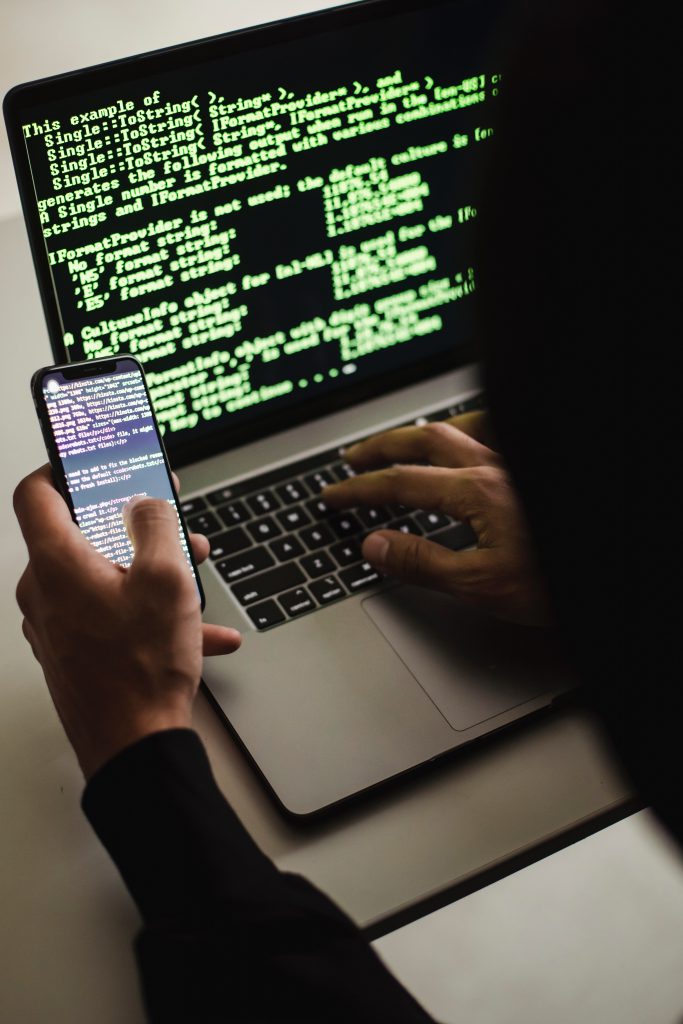General information
The word ‘Cyber’ indicates to describe a personality, program, or virtual device that shares a connection with the computer. To be precise it can include anything that is a part of technology/computer. Cybersecurity is referred to as a set of procedures and practices with the purpose of safeguarding information on any computer (Palo Alto Networks, 2019). This procedure is followed to save a person’s integrity or an organization’s privacy. Fundamentally, Cybersecurity works on making the digital environment reliable to access for everyone. At the core, Cybersecurity companies work on protecting information on the computers like the hardware, software, database from external cyberattacks or threats (Shea 2021). These threats appear in multiple forms that target violating private information.
Technical information
In information security, cyberattack refers to illegitimate operations carried by hackers to breach the information system. Cyber attacks can often take different forms, a few of the most common attacks include malware breaching, phishing scams, MitM attacks, DDoS attacks, SQL injection, and DNS Tunneling (cisco 2020). Cyber threats can be directed at particular organizations or entities, or they can be large in scope, affecting many organizations on a regional and global scale (Burgess 2010). A beneficial cybersecurity plan will have a decent defense standpoint against malicious threats aimed at accessing, altering, deleting, and extorting a company’s or end user’s networks and sensitive data (Shea 2021). Cybersecurity is often important in avoiding attacks that attempt to disable or interrupt the functionality of a machine or computer.
Historical information – Timeline

Organizations started to safeguard their information during the 1960s when computers were introduced with passwords created at the Massachusetts Institute of Technology and Bell Labs (Murphey 2019).
Internet was one of the marvelous inventions that changed world functions. With the development of technology, there is also a rise in the risk for our lives. Security distress is not the new age enigma, rather, it has always been a part of the internet(Pande, J. 2017).
Cybersecurity came into the focus of attention when United States announced the launch of ARPANET during the cold war, which was an innovative network made to experiment on connecting computers without a network, that could respond even if a connection is lost due to a bomb attack (Mutune 2019) (Pande, J. 2017).
Internet was one of the marvelous inventions that changed world functions. With the development of technology, there is also a rise in the risk for our lives. Security distress is not the new age enigma, rather, it has always been a part of the internet(Pande, J. 2017).
Cybersecurity came into the focus of attention when United States announced the launch of ARPANET during the cold war, which was an innovative network made to experiment on connecting computers without a network, that could respond even if a connection is lost due to a bomb attack (Mutune 2019) (Pande, J. 2017).
Modern internet on January 1, 1983, ARPANET implemented TCP/IP, researchers started to assemble the “network of networks” that gave rise to the Modern Internet
Due to the growing number of virus and worm attackers, security practitioners are expected to recognize methods for complaining users when surfing the internet (Mutune 2019). In 1995, the stable sockets layer (SSL) was developed. The SSL network layer allows users to safely access the internet and conduct operations such as online transactions(Mutune 2019).

On October 1, 2003, the first hacker community, Anonymous, emerged into the public eye. The group does not have a specific representative, and the participants come from various offline and online community users. It first made headlines when it used dispersed denial of service attacks to break into the Church of Scientology’s website (DDoS)(Mutune 2019).
Photo by Tima Miroshnichenko from Pexels
The recently formed Department of Homeland Security creates the National Cyber Security Division, the United States government’s first formal task force devoted to cybersecurity, in reaction to the growing amount of cyberattacks and a lack of authority about prevention (Mutune 2019).
Impact of Technology

Cyberattacks have been seen taking a risk along with the fast-growing Internet. According to the article ‘How Many Cyber Attacks Happen Per Day in 2020?’ by the tech jury, there are about 2,444 attacks that take place every day on the internet (Bulao 2020). Unfortunately, as the digital world has grown exponentially, so does the frequency and complexity of cyber-attacks. Every year industries, healthcare sectors, Financial firms, Manufacturing, Retail, and Government sectors report various cyber-attacks and spams. One of the examples where cybersecurity impacted the world was when the largest data breach took place between the years 2013 and 2014 on Yahoo which is a well-renewed website provider. This was one of the largest cyber data breaches to date which jeopardized almost 3 billion sensitive data consisting of users’ personal information like names, passwords, phone numbers, addresses, and security questions (Volz 2016). This was aggravated by a new assault three months later in 2014, which compromised a further 500 million accounts. No violation was announced until 2016. Moreover, Yahoo was hit with over 40 collective action proceedings and a $35
million fine (UKEssays 2018). This data breach caused alarm among the general public and caused heavy damage to Yahoo’s reputation and economic loss.
Future Advancements AND/OR Future Application of the Technology

Digital technology and cybersecurity are inextricably linked, which implies that current cybersecurity is closely intertwined with the growth of virtual worlds and future information systems. Almost all vital structures are linked and powered by computers in this century, and this forecasts a much closer relationship in the future.
Photo by Sora Shimazaki from Pexels
- Large data processing – Future cybersecurity platforms would be able to process vast volumes of data, cope with a wider community, and make genuine assessments (Nelson 2019)
- Cybersecurity is a significant technical advance that has provided huge benefits to a variety of organizations. In reality, as more businesses become aware of the cyber risks lurking around the web, there’ll always be a need for good security. With so many businesses keeping important information online, the is a need to invest in solid security for safeguarding their workplace environments.
- Increase in security software use- The recent transition to virtual working necessitates a need to ensure remotely accessible protection. Businesses would reconsider their security strategies in the context of a massively distributed network. For decades, best practices in organizational technologies have trained the cybersecurity community to keep sensitive activities fully and physically apart (Nelson 2019).
- Requirement for Cyber professionals- The requirement for recruiting experts in computer forensics, biometrics, cyber rules, ethical hacking, cybersecurity management, and so on would hype up. Since cyberspace is a shared network that everyone from anywhere in the world can use, the spectrum of cyber defense is the need for future security and growth.
Reference
Bada, M & Nurse, J 2019, The Social and Psychological Impact of Cyber-Attacks, viewed 4 May 2021, <https://arxiv.org/pdf/1909.13256.pdf#:~:text=The%20social%20impact%20of%20a>
Bulao, J 2020, How Many Cyber Attacks Happen Per Day? [2020 Stats and Facts], TechJury.
Burgess, JP 2010, Handbook of New Security Studies, Google Books, Routledge, viewed 3 May 2021, <https://books.google.co.in/books?id=kKaMAgAAQBAJ&lpg=PA154&ots=mYM7BRwH3I&dq=what%20is%20cyber%20security&lr&pg=PA154#v=onepage&q=what%20is%20cyber%20security&f=true>.
cisco 2020, Cyber Attack – What Are Common Cyberthreats?, Cisco, viewed 3 May 2021, <https://www.cisco.com/c/en_in/products/security/common-cyberattacks.html#~related-topics>.
Cobb, M 2021, Cybersecurity Challenges in 2021 and How to Address Them, SearchSecurity, viewed 4 May 2021, <https://searchsecurity.techtarget.com/tip/Cybersecurity-challenges-and-how-to-address-them>.
Jacob Parker 2020, What is the future of cybersecurity?, TechRadar India, viewed 4 May 2021, <https://www.techradar.com/in/news/what-is-the-future-of-cybersecurity>.
Katie Chadd 2020, The History of Cybersecurity | Avast, blog.avast.com.
Mire, S 2019, What’s The Future of Cybersecurity? 38 Experts Share Their Insights, Disruptor Daily, Disruptor Daily.
Murphey, D 2019, A history of information security – IFSEC Global | Security and Fire News and Resources, IFSEC Global | Security and Fire News and Resources.
Mutune, G 2019, The Complete History of Cybersecurity – Cyber Experts, Cyber Experts.
Nelson, O 2019, The Future of Cyber Security, Cyber Experts.
Palo Alto Networks, 2019, What is Cybersecurity? – Palo Alto Networks, Paloaltonetworks.com.
Pande, J. 2017, Introduction to Cyber Security,.
Shea, S 2021, cybersecurity, searchsecurity.techtarget.com, viewed 3 May 2021, <https://searchsecurity.techtarget.com/definition/cybersecurity?vgnextfmt=print>.
UKEssays 2018, Analysis of the Yahoo! Data Breaches, UKEssays.com.
Volz, D 2016, ‘Yahoo says hackers stole data from 500 million accounts in 2014’, Reuters, 23 September.

